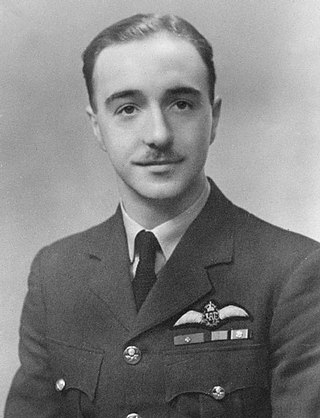
William Reid was a Scottish recipient of the Victoria Cross, the highest and most prestigious award for gallantry in the face of the enemy that can be awarded to British and Commonwealth forces. He earned his Victoria Cross as a pilot in the Royal Air Force Bomber Command during the Second World War.
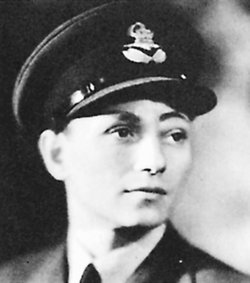
Wing Commander Hugh Gordon Malcolm, VC was a Scottish airman and a recipient of the Victoria Cross, the highest award for gallantry in the face of the enemy that can be awarded to British and Commonwealth forces.

Lieutenant Commander Eugene Esmonde, was a distinguished Irish pilot in the Fleet Air Arm who was posthumously awarded the Victoria Cross (VC), the highest award for gallantry in the face of the enemy awarded to members of Commonwealth forces. Esmonde earned this award while in command of a torpedo bomber squadron in the Second World War - in an action known as Operation Fuller, the 'Channel Dash’.
David Samuel Anthony Lord, was a recipient of the Victoria Cross, the highest award for gallantry in the face of the enemy that can be awarded to British and Commonwealth forces. A transport pilot in the Royal Air Force, Lord received the award posthumously for his actions during the Battle of Arnhem while flying resupply missions in support of British paratroops.

Flying Officer Donald Edward Garland, VC was a bomber pilot in the Royal Air Force and a recipient of the Victoria Cross, the highest award for gallantry in the face of the enemy that can be awarded to British and Commonwealth forces.

No. 249 Squadron RAF was a Royal Air Force squadron, active in the sea-patrol, fighter and bomber roles during its existence. It was one of the top scoring fighter squadrons of the RAF in World War II.

James Harry Lacey,, known as Ginger Lacey, was one of the top scoring Royal Air Force fighter pilots of the Second World War and was the second-highest scoring RAF fighter pilot of the Battle of Britain, behind Pilot Officer Eric Lock of No. 41 Squadron RAF. Lacey was credited with 28 enemy aircraft destroyed, five probables and nine damaged.

Eric Stanley Lock, was a British Royal Air Force (RAF) fighter pilot and flying ace of the Second World War.

Michael Nicholson Crossley, was a British flying ace of the Royal Air Force (RAF) during the Second World War. He is credited with having destroyed at least 22 aircraft and for a time was the RAF's most successful fighter pilot of the Second World War.
Wing Commander Hugh John Sherard "Beazle" Beazley, was a Royal Air Force fighter pilot during the Second World War.

Group Captain Francis Victor Beamish, was an Irish-born Royal Air Force fighter pilot and flying ace of the Second World War. After flying during the Battle of Britain he continued to lead fighter operations until he was killed in action in 1942.
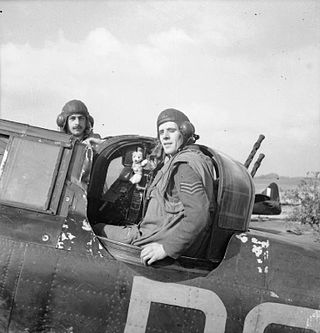
Edward Rowland Thorn,, also known as Roland Thorn, was a Royal Air Force pilot, squadron commander and a notable flying ace of the Second World War. He and his turret gunner shot down 12 enemy aircraft over the Dunkirk evacuation beaches and during the Battle of Britain. Thorn survived the war but was killed in a crash of an early jet fighter in 1946.
William Henry Franklin, DFM and Bar also known as Bill Franklin was a Royal Air Force fighter pilot and a notable Second World War flying ace decorated for gallantry twice, he shot down more than 13 enemy aircraft over the Dunkirk evacuation beaches and during the Battle of Britain before being killed in action.
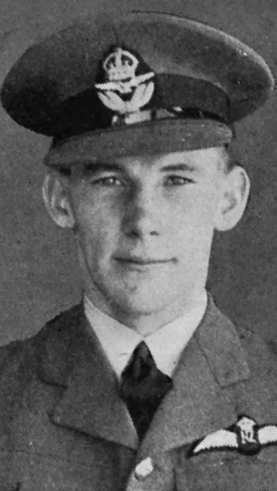
William Henry Hodgson was a New Zealand fighter pilot and flying ace who flew in the Royal Air Force (RAF) during the Second World War. He was officially credited with the destruction of five enemy aircraft.
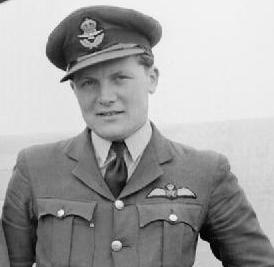
Newell Orton, was a British flying ace of the Royal Air Force (RAF) during the Second World War. He was officially credited with the destruction of 17 enemy aircraft.

George Gribble, was a British flying ace of the Royal Air Force (RAF) during the Second World War. He was officially credited with the destruction of at least six German aircraft.
John Curchin, was an Australian flying ace of the Royal Air Force (RAF) during the Second World War. He was credited with at least eight aerial victories.

Robert Alexander Barton, was a Canadian-born officer who served in the Royal Air Force (RAF) during the Second World War. He was credited with at least 12 aerial victories.

John Urwin-Mann, was a Canadian flying ace who served in the Royal Air Force (RAF) during the Second World War. During his service with the RAF, he was credited with having shot down at least eight aircraft.
Stanley Connors, was a British flying ace who served with the Royal Air Force (RAF) during the Second World War. He was credited with having shot down at least twelve aircraft.

















